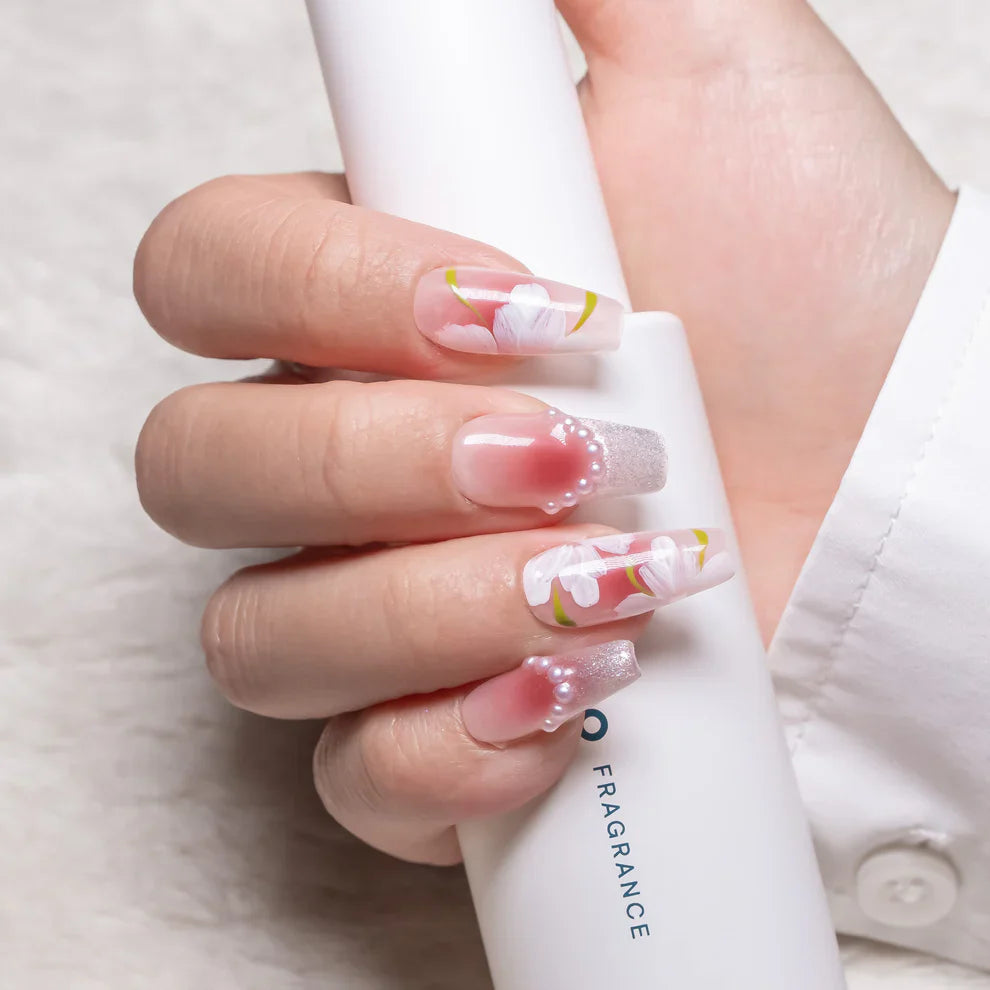
The Environmental Impact of Choosing Press On Nails Coffin Shape
The beauty industry has long been scrutinized for its environmental footprint, and nail care is no exception. As consumers become more conscious of their ecological impact, the popularity of press on nails, particularly in the coveted coffin shape, has surged. These coffen nails offer a stylish alternative to traditional manicures, potentially reducing the need for frequent salon visits and the associated use of harsh chemicals. But how do coffin press on nails stack up in terms of sustainability? This article delves into the environmental considerations of choosing press on nails coffin shape, exploring their eco-friendly potential, reusability, carbon footprint, and creative recycling options.
Table of contents:
Eco-Friendly Options in the World of Fake Nails Coffin Style
Reducing Salon Visits with Reusable Press On Nails Long Coffin Sets
Comparing the Carbon Footprint of Traditional Manicures and Coffin Press On Nails
Recycling and Upcycling Ideas for Used Press On Nails Coffin Shape Products
Eco-Friendly Options in the World of Fake Nails Coffin Style
The realm of coffen nails has expanded to include more environmentally conscious options. Manufacturers are now producing coffin press on nails using biodegradable materials and non-toxic adhesives, addressing concerns about plastic waste and chemical exposure. These eco-friendly alternatives often come in recyclable packaging, further reducing their environmental impact. Some brands have even introduced plant-based coffin press on nails, derived from sustainable sources like corn or wheat. By opting for these greener versions of press on nails coffin shape, consumers can enjoy the trendy look while minimizing their ecological footprint. The shift towards sustainable materials in the fake nails industry represents a significant step towards more responsible beauty practices.
Reducing Salon Visits with Reusable Press On Nails Long Coffin Sets
One of the most significant environmental benefits of coffin press on nails is their potential to reduce the frequency of salon visits. Traditional acrylic or gel manicures often require bi-weekly appointments, which involve the use of energy-intensive equipment and harsh chemicals. In contrast, a single set of coffen nails can be reused multiple times with proper care. This reusability not only saves money but also decreases the overall resource consumption associated with nail care. By choosing high-quality press on nails coffin shape, users can achieve a professional look at home, cutting down on transportation emissions and the cumulative impact of regular salon treatments. The longevity of these press-on options makes them a more sustainable choice for those seeking to maintain stylish nails.
Comparing the Carbon Footprint of Traditional Manicures and Coffin Press On Nails
When examining the environmental impact of nail care, it's crucial to consider the carbon footprint of different options. Traditional manicures involve multiple products, including base coats, color polishes, and top coats, each with its own manufacturing and transportation footprint. Salon services also consume electricity for lighting, ventilation, and equipment operation. In comparison, coffin press on nails typically have a lower carbon footprint due to their streamlined production process and reduced need for additional products. While the materials used in coffen nails may not always be biodegradable, their extended usability can offset some of the environmental costs. By choosing reusable press on nails coffin shape, consumers can potentially reduce their nail care-related carbon emissions over time.
Recycling and Upcycling Ideas for Used Press On Nails Coffin Shape Products
As environmentally conscious consumers seek ways to minimize waste, creative recycling and upcycling ideas for used coffin press on nails have emerged. Once these press-on nails have reached the end of their wearable life, they can be repurposed for various craft projects. Some innovative ideas include using them as decorative elements in mosaic art, incorporating them into jewelry designs, or even creating miniature sculptures. For those who prefer to recycle, some specialized facilities can process artificial nails, though availability may be limited. Consumers can also explore nail-specific take-back programs offered by certain manufacturers. By finding creative ways to reuse or properly dispose of coffen nails, users can extend the lifecycle of these products and reduce their overall environmental impact.

The rise of press on nails coffin shape represents a shift in the beauty industry towards more convenient and potentially eco-friendlier options. While these products are not without their environmental considerations, they offer several advantages over traditional manicures in terms of reusability and reduced chemical exposure. As the market for coffin press on nails continues to grow, we can expect to see further innovations in sustainable materials and production methods. By making informed choices and properly caring for their press-on nails, consumers can enjoy trendy nail styles while taking steps to minimize their environmental footprint. The future of nail care may well be shaped by these versatile and increasingly eco-conscious alternatives.